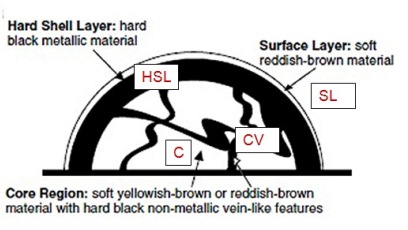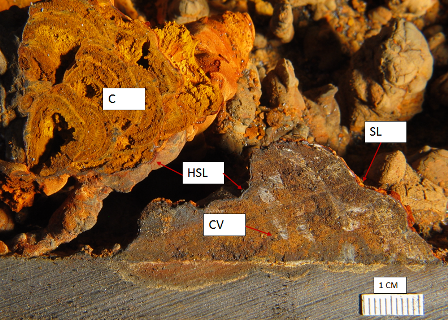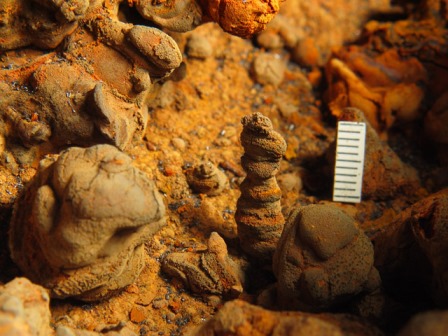Iron scales found in water distribution systems
Iron is the most abundant metal used in water distribution, so scales formed on the interiors of iron pipes are by far the most abundant type of scale encountered. Most water mains are cast iron (older) or ductile iron (newer). The older cast iron pipes were unlined and have serious corrosion problems. Newer iron pipes are lined with cement to inhibit this corrosion. Galvanized iron and steel pipes are rare in water mains but are common in service lines and in premise plumbing. They tend to corrode more severely than other plumbing components and their use has fallen out of favor.
Internal corrosion on iron pipes does not produce an even film, unlike copper and lead scales. Instead irregular domal structures, called tubercles, deposit on the insides of the pipes. Sometimes these form miniature chimneys, which may be former pathways for escape of hydrogen gas, which is generated by reaction of water with metallic iron.
(click for larger image)
 |
 |
| These tubercles have an internal morphology that comprises (1) a soft surface layer (2) a hard shell layer (3) the core and (4) veins within the core | |
See Gerke and others (2008) for more detailed information on these textural features. See Toxic Elements in Iron Scales and Gerke and others (2013) for chemical compositions of these tubercle components.

